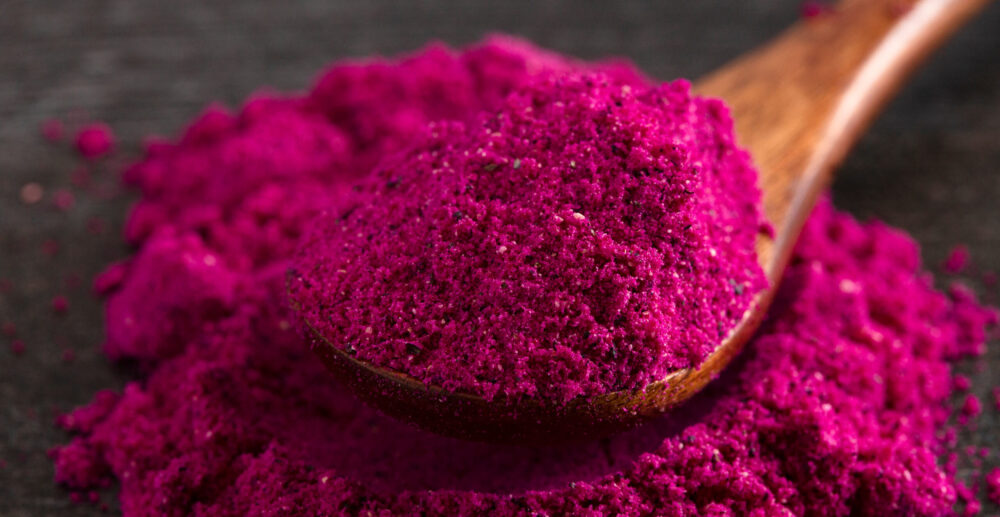Freeze-dried powders as a powerful survival food

The world is in a constant state of change, and the unexpected, including the quirks of nature, that come unexpectedly. With this in mind, it’s useful to have at least a small buffer of food at home to consume when the unpredictable happens. That way, you don’t have to worry if the electricity suddenly goes off, prices suddenly spike, or if for some reason you can’t get to the grocery store for a meal. But what are the best survival foods and why choose freeze-dried products?
Let’s start at the beginning – what is survival food?
Survival food is primarily considered as food items that have a long shelf life and can be stored for emergencies without fear of spoiling. Survival food can include legumes, canned vegetables, dried fruit, seeds and nuts, as well as some fruits and vegetables (such as apples, beetroot, potatoes and carrots) that do not spoil quickly. However, the nutritional value is often a concern, as the nutritional value is often significantly lower in the case of foods that have been preserved for a long time compared to fresh produce. Nutrient-rich freeze-dried fruits and fruit powders can help to keep vitamin reserves topped up, and to re-energise the body in unpredictable situations.
Why are freeze-dried ingredients considered the ideal survival food? ?
Freeze-dried powders and super-mixtures are renowned for their high nutritional value and rich taste. Because freeze-drying happens at a very low temperature, the fruit retains all the vitamins, minerals and phytonutrients it needs and tastes and colours just like fresh fruit. However, as the water is removed during the freeze-drying process, there is no risk of spoilage of the raw materials, which means that they can be stored for decades without losing their nutritional value. This means that mineral-rich leafy vegetables, superfoods and delicious fruits are always to hand, even when fresh is not available. What’s more, storing freeze-dried fruit and powders is easy and convenient, as the small, lightweight packs fit comfortably into both kitchen cupboard and drawer storage without taking up too much space. In contrast, heat-processed canned foods cannot provide half the nutritional value of freeze-dried fruit and vegetables.
How is freeze-drying carried out and what is it exactly?
Freeze-drying dates back to the 15th century, when the Incas used it to preserve their crops. The crops were taken to high altitudes where the water slowly evaporated in a cold environment with low air pressure. However, modern freeze-drying methods were first developed during the Second World War, and were introduced into the food industry in the 1950s. Freeze-drying is the process of drying fresh fruit and vegetables in a vacuum (0.05 atm) and at very cold temperatures (down to -80 degrees Celsius). The aim of the process is to freeze the water contained in the fresh fruit, and then to use a vacuum system to remove the ice from the fruit, which is then converted into vapour without passing through the liquid state. Thanks to this technology, freeze-dried fruit retains its shape, colour, aroma, flavour and nutritional value. Freeze-drying, on the other hand, leaves the fruit or vegetable light and airy, leaving an average water content of between 1 and 3%.
What is the advantage of freeze drying over other drying methods?
The main advantage of freeze-drying is its nutrient richness and its extremely long shelf-life, which cannot be compared with, for example, dehydration or canning. Because freeze-drying uses very low temperatures, no nutrients are lost. The only thing that is removed from the fruit during the process is water. Freeze-drying removes up to 98% of the water, resulting in a food that is up to 90% lighter. However, the removal of water is essential for preservation, to prevent the growth of harmful bacteria and thus prevent spoilage. As a result, the shelf life of freeze-dried products can be up to 25 years, depending on the storage temperature, the packaging and the raw material itself. As freeze-dried raw materials are much more concentrated, even a small amount of freeze-dried mix can provide the body with the most essential nutrients. No other method of storage allows the nutritional value of the fruit to be preserved to this extent.
How can freeze-dried powders be consumed?
Freeze-dried powders are perfect in smoothies, as a topping for porridge, in sauces, in salads or even mixed with water – just the way you like it! Similarly, freeze-dried powders can be enjoyed with seeds and nuts or even dried fruit to prepare vitamin-packed raw bars or energy bars.
Do freeze-dried fruits and vegetables really provide all the nutrients needed for life?
Yes, they do, and even more. Because freeze-dried powders are much more concentrated than fresh fruit, even a small amount is enough to provide the body with the vitamins and minerals it needs. For example, to make 1kg of mango or dragon fruit powder, you need 15kg of fresh pulp. This in turn means that just one spoonful of freeze-dried powder has a lot of nutritional value. The same applies to all freeze-dried fruit and vegetable powders.
Where to buy freeze-dried powders?
A wide range of freeze-dried fruit and vegetable powders is available in Centralsun’s online shop. From tropical fruits to power-packed wild blueberries, herbs and leafy greens, there’s something for everyone!
Find out more HERE and order your favourites today!

Tarmo Valing is the co-founder of Centralsun – a health shop focused on clean, natural products. With a passion for conscious living and plant-based nutrition, Tarmo shares knowledge and inspiration through Centralsun’s blog.